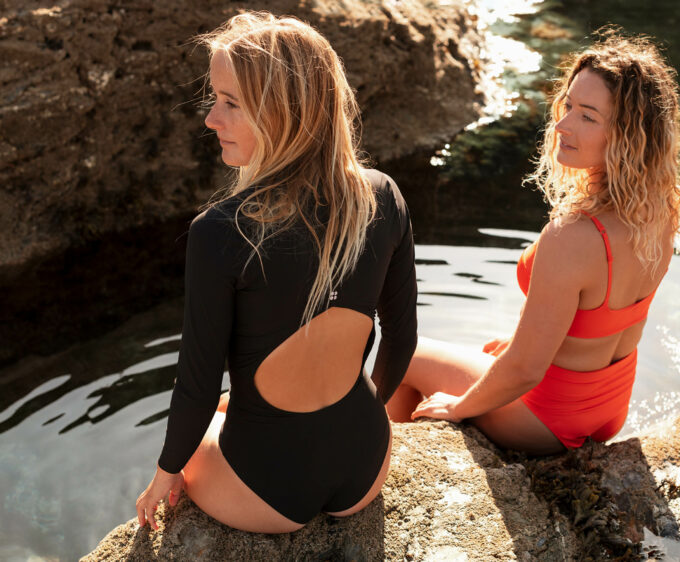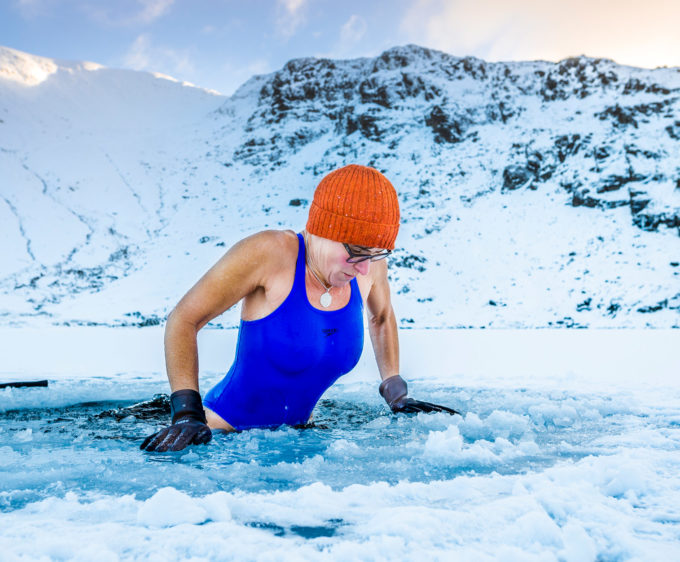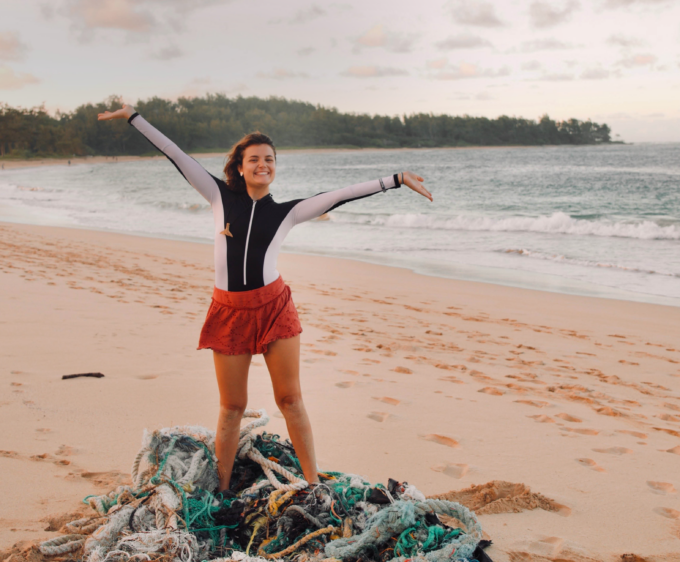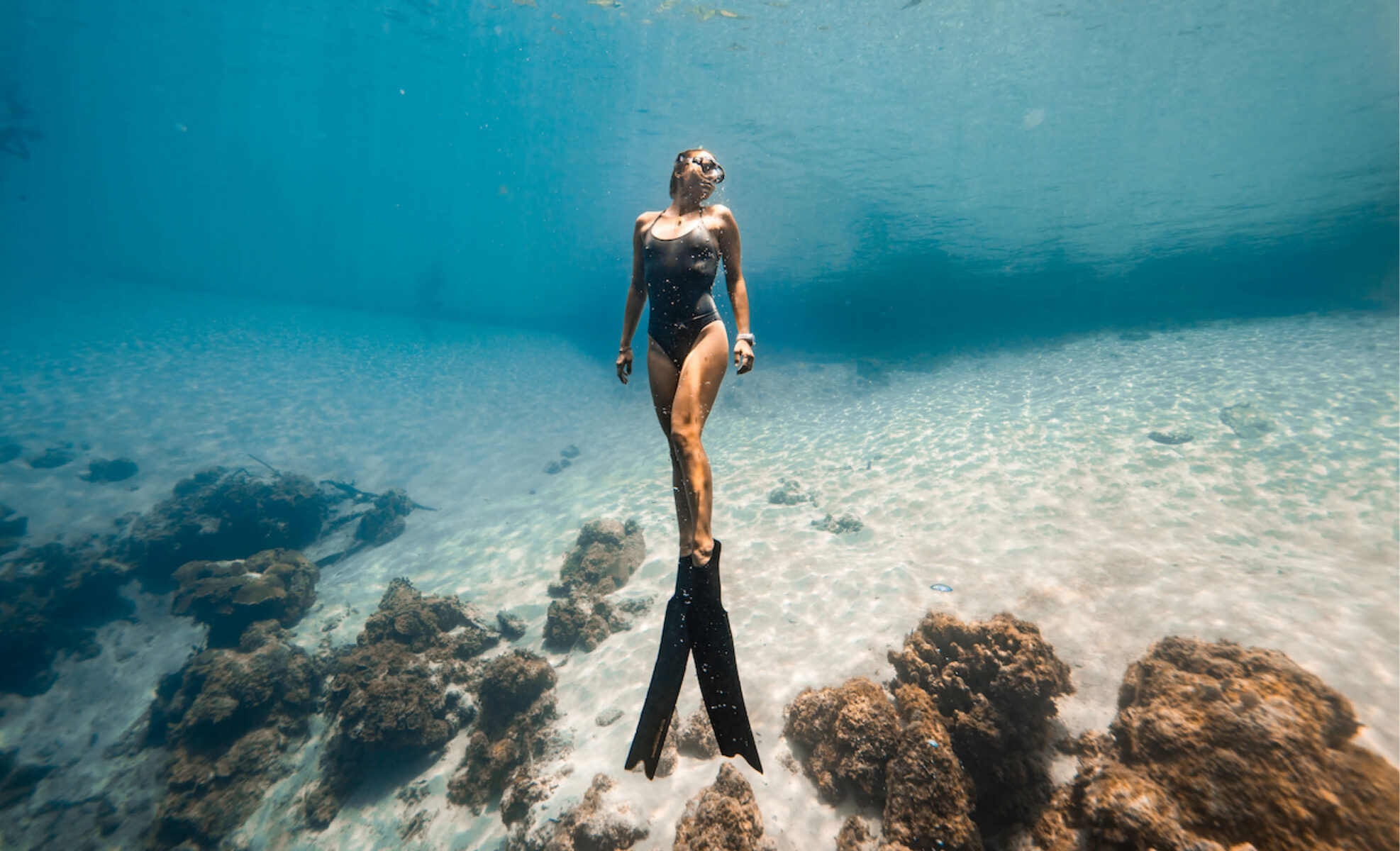
Ocean: Alenka Artnik
Freediver Alenka Artnik took a deep breath and disappeared into the sea depths. She reemerged a record breaker. We meet Alenka to discuss her extraordinary talent
By Martina Žoldoš
On 21 July 2021, Slovenian freediver Alenka Artnik took a deep breath, made a duck turn, kicked with her monofin and disappeared into the sea depths. Three minutes and 37 seconds later, she reemerged after having descended 122 metres. The few spectators and safety freedivers who had been patiently waiting for her return, cheered and splashed water into her face, when a judge lifted a blank white card: Alenka had just broken a record. The moment was groundbreaking: she had dived deeper into the sea than any other female and was the fifth deepest person ever – but also because she made it look so easy. Soon everybody started asking: how deep can she dive?
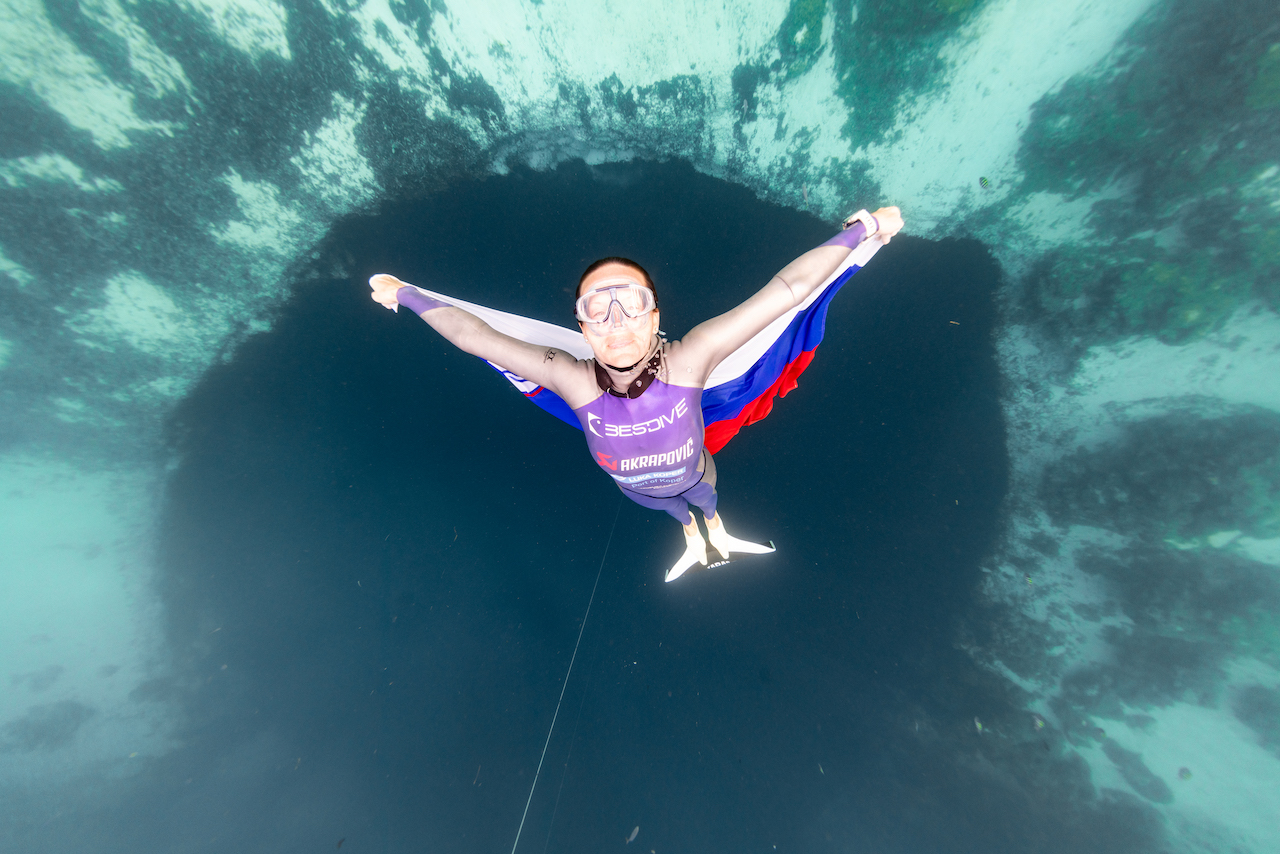
Despite looking as if she has been doing it forever, Alenka started practising freediving late, when she was 30 years old. Growing up in a dysfunctional family, dominated by her father’s alcoholism and brother’s drug abuse, she wandered aimlessly through most of her life. To escape the toxic environment she dropped out of school and a promising career in kayaking. After a decade of scraping along and being on the verge of a suicide, an old friend invited her to a freediving training session. That moment changed her life: “It was like falling madly in love. For 30 years, I didn’t know what I was sent here for, and then I finally found my language, a way to express myself. I was finally able to breathe even though I was underwater.” The fascination soon translated into serious training, first in the pool and later in the sea’s depths.
After resigning from her job, she travelled to Dahab in Egypt where she rented a beach house and focused solely on training. With freediving being a relatively young sport, professional trainers were scarce, so Alenka dug into literature and science articles about freediving, its effects on the human body and apnea (breath holding), and eventually started to experiment. In 2017, only six years after her initial dive, she became a world champion in the constant weight discipline, where the freediver descends and ascends along the rope, using their monofin without pulling on the rope or dropping the ballast. A year later, she achieved her first world record, descending 105 metres. Since then she has improved on her record six times. Today, there is only one person who can dive deeper.
Record

In the last few years, technology has enabled viewers around the world to enjoy Alenka’s achievements via live streaming. However, there’s one person who has the opportunity to witness her and record-making up close. Daan Verhoeven, an underwater photographer, documents dives of all competitors in the freediving world championships. “Most freedivers kind of look the same, they all wear wet suits, but you instantly notice Alenka because her technique is so good. She’s so fluid in the water, so naturally dominant. It’s a joy to watch her dive because she looks so strong, so fit, so trained for purpose. For me, that’s poetry,” says Daan. He adds that he especially loves it when she resurfaces: “There’s never any signs of struggle, she makes it look easy. That’s what true champions do.”
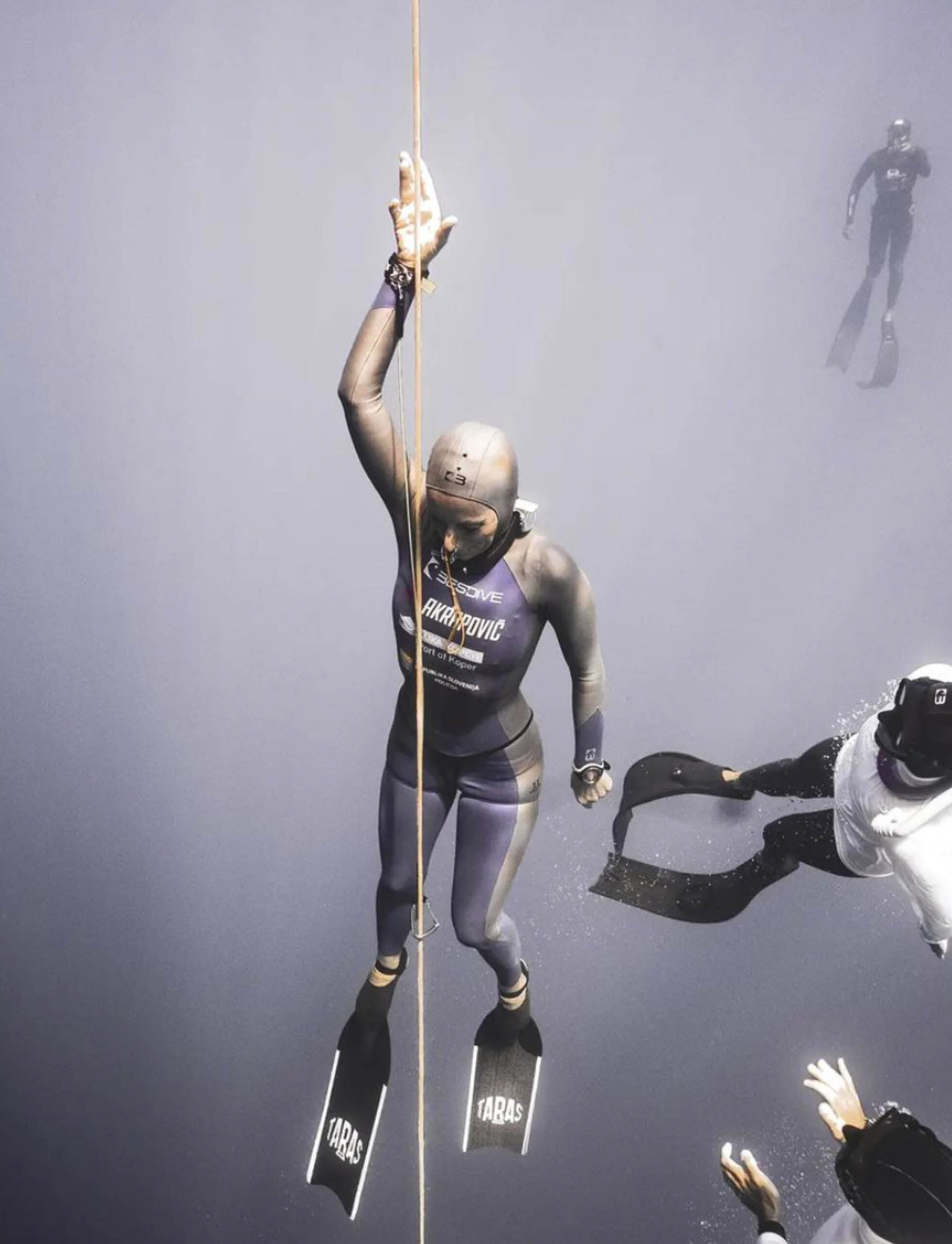
Although the pressure of such depth is huge (the lungs are squeezed to the size of a tennis ball), Alenka assures me that it doesn’t hurt a bit. “If you’re capable of surrendering, you actually feel you’re melting. It’s like someone is gently hugging you.” The key, according to Alenka, is finding the perfect balance between complete concentration and profound relaxation. “You have to be focused to continue equalising the pressure, which is a very subtle manoeuvre. At the same time, the pressure is putting enormous force on your lungs, so in order to avoid pain, you need to yield,” explains Alenka.
Reaching this crucial state requires hard training, not only physical but also mental. For only a few dives, executed at a world championship, Alenka trains for a whole year. “After some rest, I start with the base training which includes a lot of technique- and strength-focused exercises: fitness, trekking, climbing, and swimming many kilometres in the pool.” Under the water, she also trains to hold her breath, while on the surface she practises dry equalisation, meditation and breathing. “Breathing exercises are important because they increase the tolerance to carbon dioxide and the flexibility of the rib cage and the diaphragm.

SURFACE
The important thing isn’t having great lung capacity, but rather knowing how to use that capacity.” Six months before the competition, Alenka heads off to Honduras for depth training. First, she only descends up to 60 metres. About four weeks prior to the competition she slowly increases the depth. Since such dives are physically and mentally very strenuous, it’s important to increase the depth gradually, she says. “After every training session, I analyse the dive. If I feel that I haven’t polished it enough, I repeat it until it’s flawless. Only then do I go deeper.” This strategy has led to Alenka successfully completing all the depths she had predicted before the competition.
Alenka meticulously plans and structures all her dives. She wears a small diving computer on her neck, which alerts her of the beginning of an individual phase. “Up to a depth of 15 metres I need to kick very hard, as the buoyancy below the surface is the greatest.” At 25 metres, the alarm reminds her to perform a manoeuvre called mouthfill: she fills her mouth with the air and closes the epiglottis (a tissue beneath the tongue at the back of the throat) to prevent air from returning to the lungs and stomach.
“This manoeuvre is very important, as it will allow me to equalise the pressure throughout the dive.” At a depth of 50 metres, where the pressure is already very strong, the computer informs Alenka to completely relax and surrender. The next milestone is 80 metres, where she begins to fall freely due to the negative buoyancy. “This phase is totally out of this world,” she says. And at five metres before the final depth, the alarm warns Alenka to prepare for the turn. “When you finally get to the bottom plate, you take the ticket and start ascending. This is where the real physical work begins. At this moment, it is of utmost importance not to think about land, about wanting to breathe or focusing on the fact that you just completed a world record! As soon as you start thinking about those things, there’s a very high probability that you won’t manage to get back to the surface alone, that the dive will fail. It’s very important to tame your ego.”

Daan has first-hand experience how feeding an ego can negatively influence the performance. Before turning to photography, he used to be a freediving competitor himself, until, as he puts it, the records and the attention he was getting led him down the wrong track. “I started to dive for ego and numbers rather than for pleasure. It was kind of an obligation.”
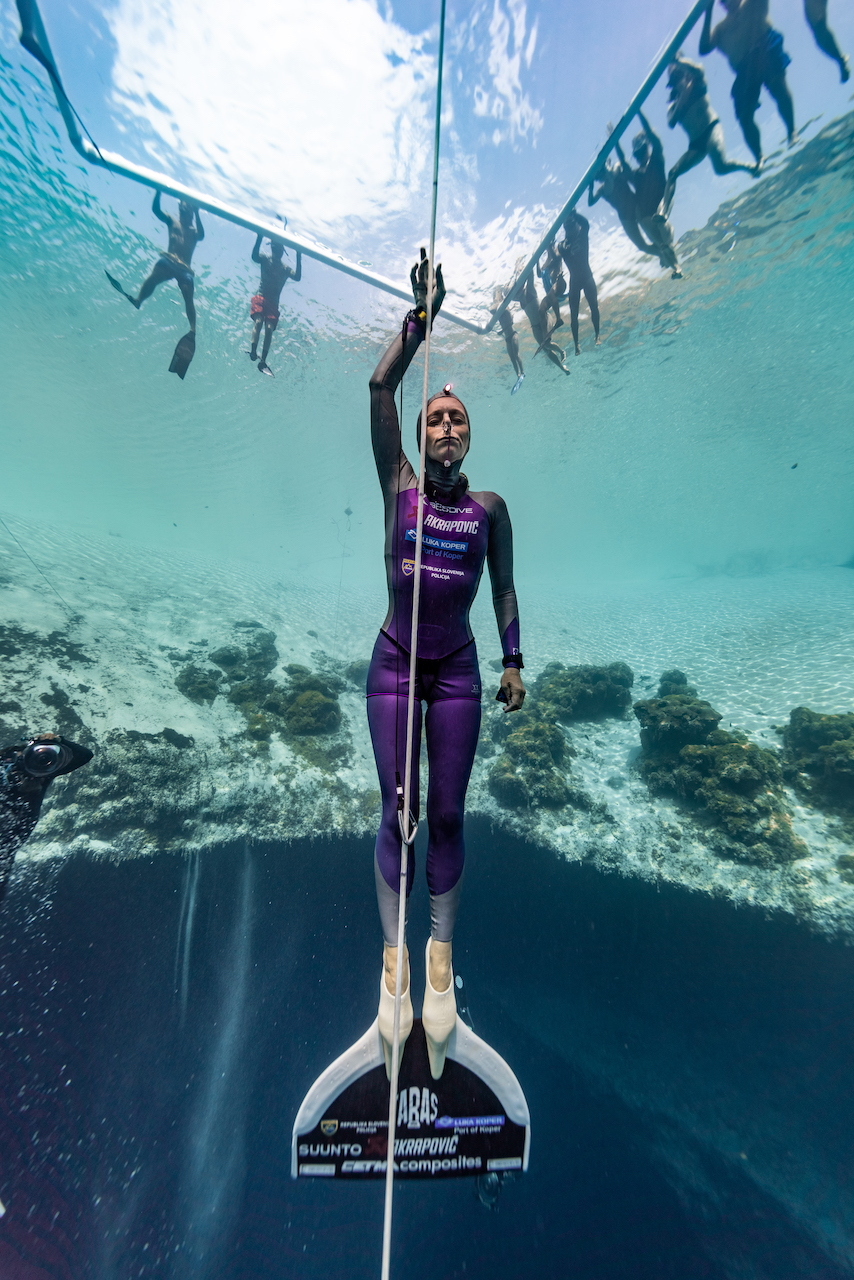
He quit competing but decided to remain a part of the community by becoming a safety diver, an instructor and eventually a freediving photographer. “I always wanted to be a photographer so I applied for a photography course at a college in Holland when I was young,” explains Daan. Unfortunately, the school rejected him so he ended up studying communications and working in publishing. On one of his freediving trips, he took a phone with a camera with him and “with that little camera I rediscovered how much I enjoyed photography”. In the following years, he bought professional photography gear and combined his two great passions into a profession, centering his work on freedivers. “I completely understand people who focus on wildlife, on macro photography or the guys who photograph waves. However, I need a freediver in my frame; otherwise, I don’t know what to do,” he says.
passions

As a freediving photographer Daan uses the same gear as his subjects: a wetsuit, mask, snorkel and long fins, which means his time for taking photos is very limited. For properly documenting the dive of a competitor, he has to submerge twice. He descends before the diver to get the picture of him or her on the way down. Then he quickly swims to the surface to take a couple of breaths, then dives again to catch the diver while they ascend. His dives are on average two minutes long; if he pushes it, he says, he can do three. “I dive before the competitor, position myself where I expect him to be and shoot on burst.” While taking photographs, Daan rotates around the competitor to get as many different angles as possible.
Since there can be up to 30 athletes competing, Daan can do 60 dives a day, which can be extremely exhausting. “I don’t know how he can do it. He has such great breath-hold stamina, it’s insane,” comments Alenka. To endure such efforts, Daan has to regularly train to maintain his fitness and strength. Alanka and Daan’s office, the underwater environment, can be very unstable and unpredictable. “The visibility depends on the sea and the day. The best I’ve experienced was in Cyprus at 15 metres, it felt endless. It gives you vertigo”, says Daan.
“The worst I’ve worked in was less than a metre; it was like photographing in soup. It can be interesting but very challenging. Also, when the tide is coming in, it brings in a lot of stuff, so there are all these particles flowing around. However, one of the elements I always find the most striking is you can’t predict underwater currents. It can be really calm at the surface, and then down at five metres, you suddenly get blown away.” Nevertheless, Daan admits that his biggest danger is himself. “If you’re just chasing an image, you might forget that you’re really deep and that you’re running out of oxygen. So I try to always keep in mind: ‘you are mortal’. So I try to always have somebody watching near the surface.”
The rule of never diving alone is the one that all freedivers should follow, agrees Alenka. “Even when I dive for pleasure and even though I swim in shallow waters, there’s always someone with me.” She adds that freediving might be an extreme sport, but not a dangerous one, as long as you follow the rules. “It’s important for people to understand that we dive in a controlled environment, with a team of professionals who immediately help if something goes wrong.”
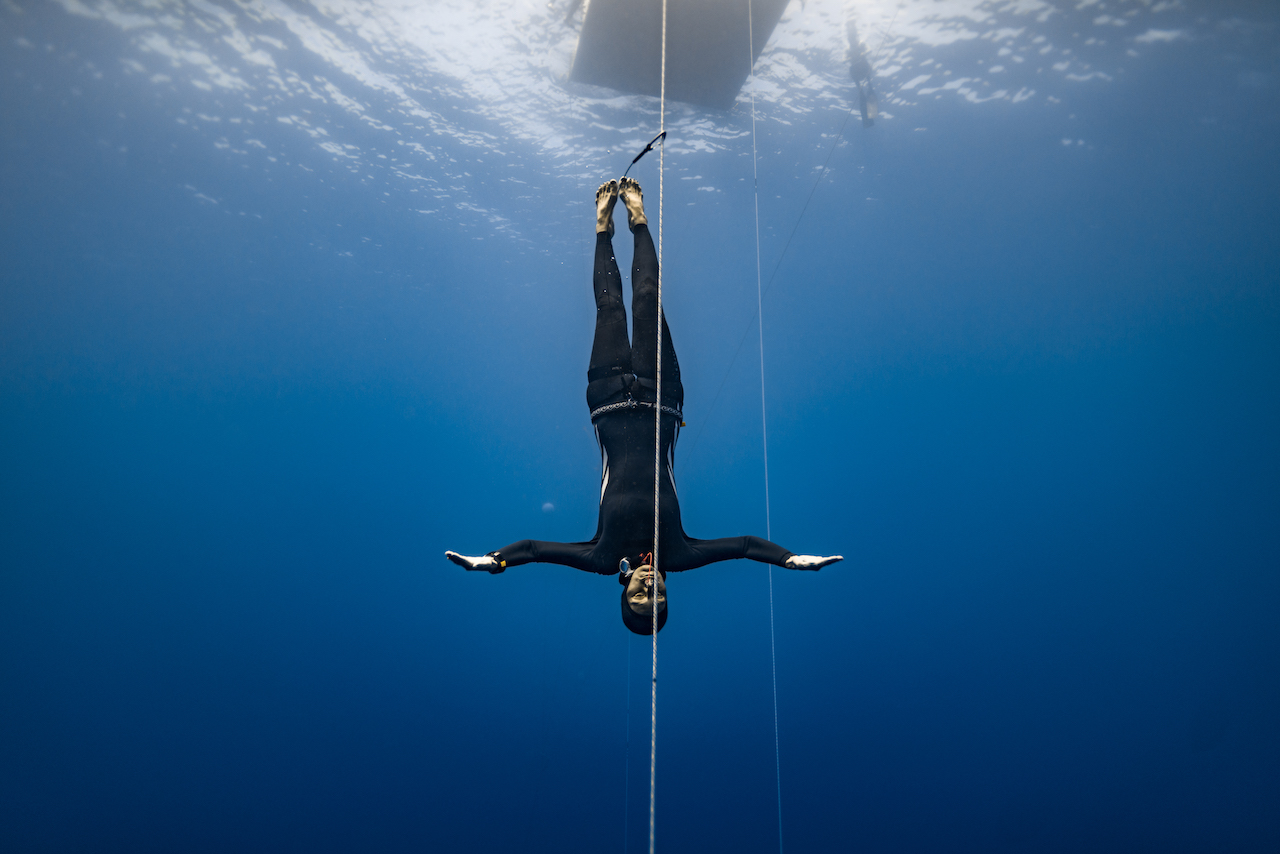
Title Image by Daan Verhoeven, Editorial Design Root
